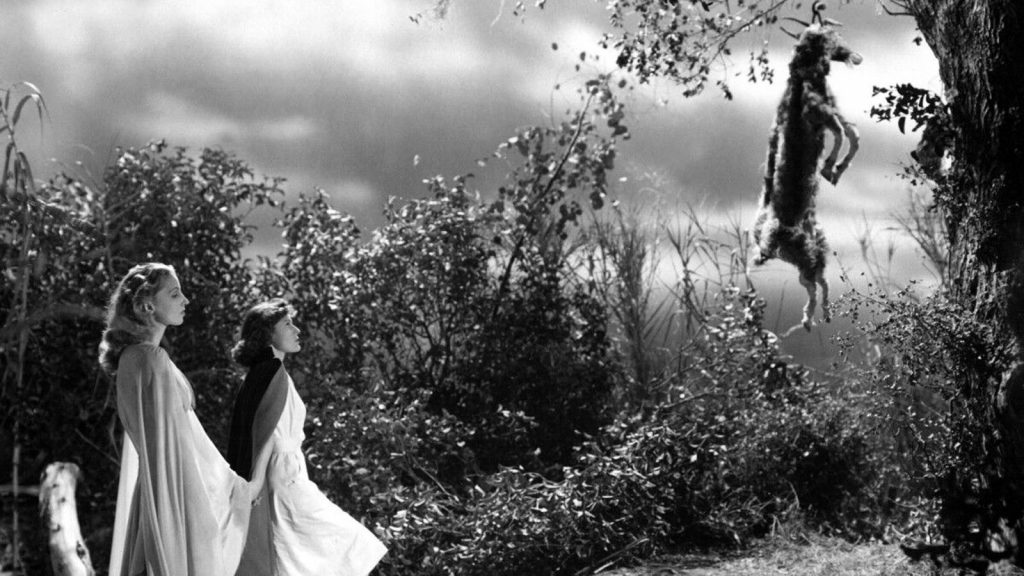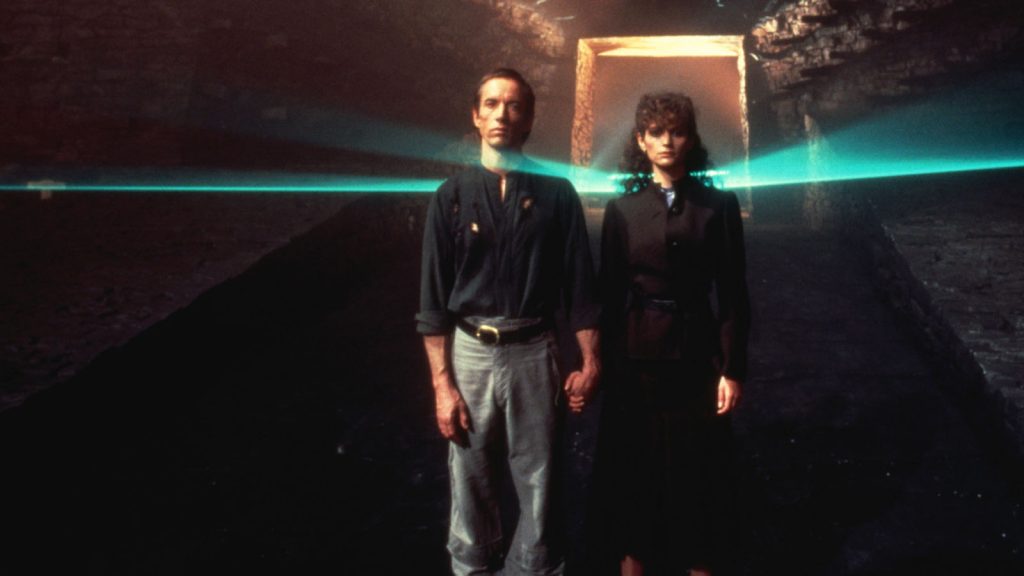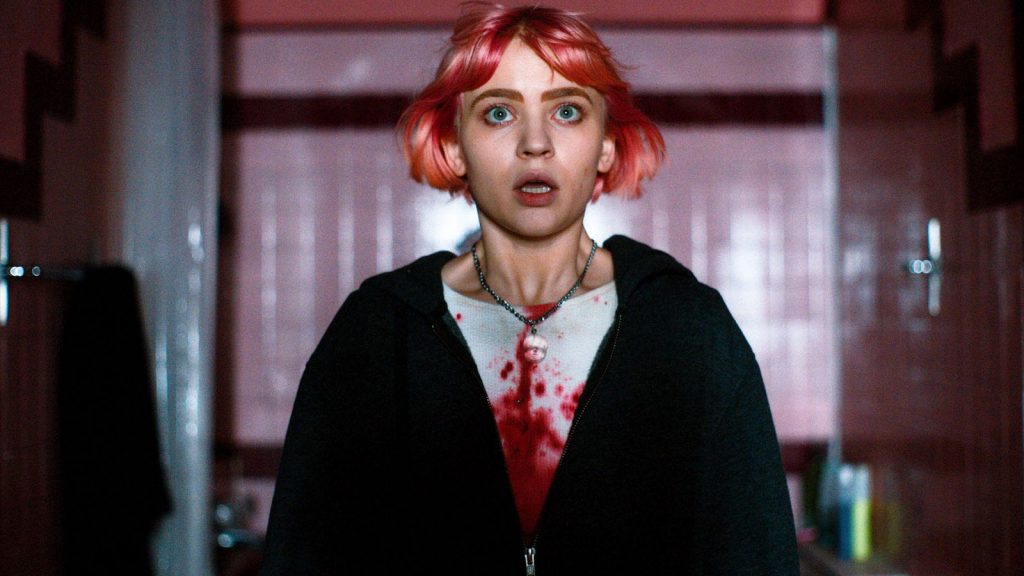
A nurse leads a catatonic through an expanse of moonlit cane. They pass displays of sacrificed animals before encountering the towering, shirtless, dead-eyed Black man who grants them entry to a private outdoor religious ceremony—one that the nurse hopes will draw the other woman out of the spell that’s rendered her incapable of any activity besides aimless wandering. Photographed in mercury hues and largely devoid of scoring, so as to emphasize whistling wind, this pivotal passage in I Walked with a Zombie (1943), directed by Jacques Tourneur, is arguably the single most beautiful sequence in the entirety of producer-auteur Val Lewton’s cycle of nine low-budget horror films for RKO—a body of work unlike any other in Hollywood’s Golden Age.
Using Jane Eyre as a template, the film follows a pretty, wide-eyed, inveterately curious caregiver from Canada—herself a potential template for Naomi Watts’s heroine in Mulholland Dr.—who comes to a Caribbean isle to look after a plantation owner’s spouse. But the locals suggest that the nonverbal patient may be afflicted with something beyond the purview of medical science, while the nurse, Betsy (Frances Dee), finds herself hopelessly attracted to her melancholic employer (Tom Conway). She also receives a whirlwind education in the island’s culture and colonial roots. In a truly amazing early scene, a charismatic carriage driver regales Betsy with a potted history of the slave industry that brought his ancestors there. Later, she learns of a custom in which someone is designated to weep upon the birth of a child in this place so far from the Black populace’s homeland.
Coming less than two years after the NAACP negotiated with Hollywood executives for less stereotypical representation of Blacks, I Walked with a Zombie brims with what at the time were astonishingly sophisticated roles for actors of color, such as the beguiling Theresa Harris, whom viewers might recognize from Tourneur’s Out of the Past (1947), or the calypso singer Sir Lancelot, who would reunite with Lewton for The Ghost Ship (1943) and The Curse of the Cat People (1944). Lancelot’s role here is especially delicious, at first unsettling the plantation owner’s alcoholic loser brother, and later, after the brother passes out from drink, spooking Betsy with a song about her employer’s cursed family, slowly approaching her as he sings like a warning ghost. What’s more, the film’s deployment of then-fashionable and woefully misunderstood voodoo tropes is undertaken without condescension. On the contrary, the scenes of ceremonial dancing and drumming are captivating and dignified.
As with many great noir films, Lewton’s horror classics transform low production values into platforms for spartan lyricism: the starkly furnished sets and chiaroscuro lighting combine with the bracing economy of the storytelling to infuse these works with the ambiance of a deeply eerie dream. Lewton’s films are also characterized by the death drive that underscores their narratives, and I Walked with a Zombie, from the early moment when the plantation owner waxes morosely about the sea’s “glitter of putrescence” as sailors sing a cappella behind him, to the climactic sequence that combines acts of euthanasia and suicide, is arguably this bleak tendency’s eloquent apotheosis.🩸

is a freelance critic and playwright.
Though it’s not as widely known as some of the other B-horror films that Val Lewton produced for RKO between 1942 and 1946, The Seventh Victim is the cycle’s poetic pinnacle.
BY MICHAEL KORESKY | October 31, 2021
A lipstick and makeup mirror slip from fear-frozen hands, a sack spills corn flour along a grassy trail, a ball floats atop a geyser of water, the rattlesnake whir of castanets, blood seeps...
BY JOSÉ TEODORO | October 29, 2025
At this crazy moment, when film history is caught in the grip of multiple clichés that grind on and on and on...
BY KENT JONES | September 10, 2023

This pre-Code offering packs a lot of story into its typically brisk running time, with several plot threads weaving together a (not always successful) tapestry of spooky and criminal doings.
READ MORE >
BY ANN OLSSON | Month 00, 2021

In what could be the fastest-resulting rape revenge movie, a drunken lout brutally forces himself on Ida, the young woman who doesn't return his affections, during a party over Labor Day.
READ MORE >
BY LAURA KERN | Month 00, 2021

Beast is a lot of movies in one package - fractured fairy tale, belated-coming-of-age story, psychological drama, regional horror film - but above all it's a calling card for its leading lady, Jessie Buckley.
READ MORE >
BY LAURA KERN | Month 00, 2021